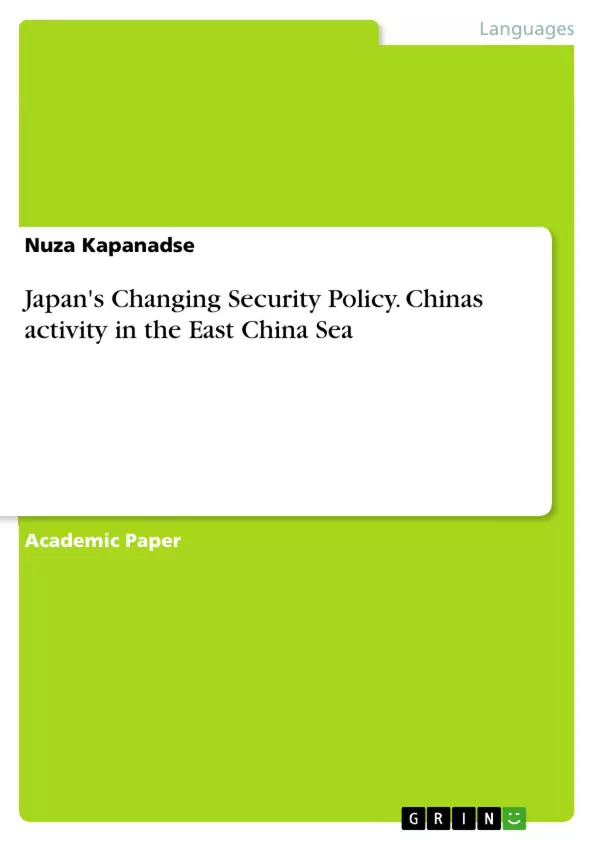This study is going to try to find out if Chinese activities are provoking Japanese response. Therefore I formulate the following research question: Why did Japan change its military policy since 2013 and was it caused by increased Chinese activities in the East-China Sea? To answer my research question, I will first discuss the roots of the Senkaku dispute. Next, I will discuss China's strategy to assert its interests around the Senkaku’s. Then I will examine Japan's actions to protect the islands. In a final step, I will analyze whether Japan's actions are just responses to China.
Inhaltsverzeichnis (Table of Contents)
- Introduction
- Roots of Conflict
- China's Strategy
- Japan's Strategy
- Discussion
- Conclusion
Zielsetzung und Themenschwerpunkte (Objectives and Key Themes)
This study examines the evolving relationship between China and Japan, specifically focusing on Japan's changing security policy in response to China's assertive activities in the East China Sea. It seeks to understand the reasons behind Japan's shift towards a more active defense policy and to determine if this shift is directly caused by Chinese actions.
- The territorial dispute between China and Japan over the Senkaku Islands
- China's strategic ambitions in the East China Sea and its efforts to secure access to the Pacific
- Japan's response to China's growing military presence and its efforts to protect its interests
- The impact of historical events and international treaties on the current situation
- The geopolitical implications of China's rising power and its impact on regional security
Zusammenfassung der Kapitel (Chapter Summaries)
- Introduction: The chapter outlines the changing geopolitical landscape in Asia, particularly focusing on China's rapid rise and its impact on Japan's security concerns. It also introduces the research question: Why did Japan change its military policy since 2013, and was it caused by increased Chinese activities in the East China Sea?
- Roots of Conflict: This chapter delves into the history of the Senkaku Islands dispute, examining the claims of both Japan and China. It analyzes the historical events, including the Treaty of Shimonoseki, the Treaty of San Francisco, and the Okinawa Reversion Treaty, which have shaped the current territorial claims. The chapter also discusses the potential economic and strategic motivations behind the dispute, highlighting the importance of the Senkaku Islands for both countries.
Schlüsselwörter (Keywords)
The primary focus of this work is on the dynamic relationship between China and Japan in the East China Sea, with particular emphasis on the Senkaku Islands dispute. The study delves into historical treaty agreements, examines China's strategic ambitions and military expansion, and analyzes Japan's evolving security policy in response to China's actions. Key concepts include territorial sovereignty, resource competition, military modernization, strategic interests, and regional security.
- Citation du texte
- Nuza Kapanadse (Auteur), 2021, Japan's Changing Security Policy. Chinas activity in the East China Sea, Munich, GRIN Verlag, https://www.grin.com/document/1190738



